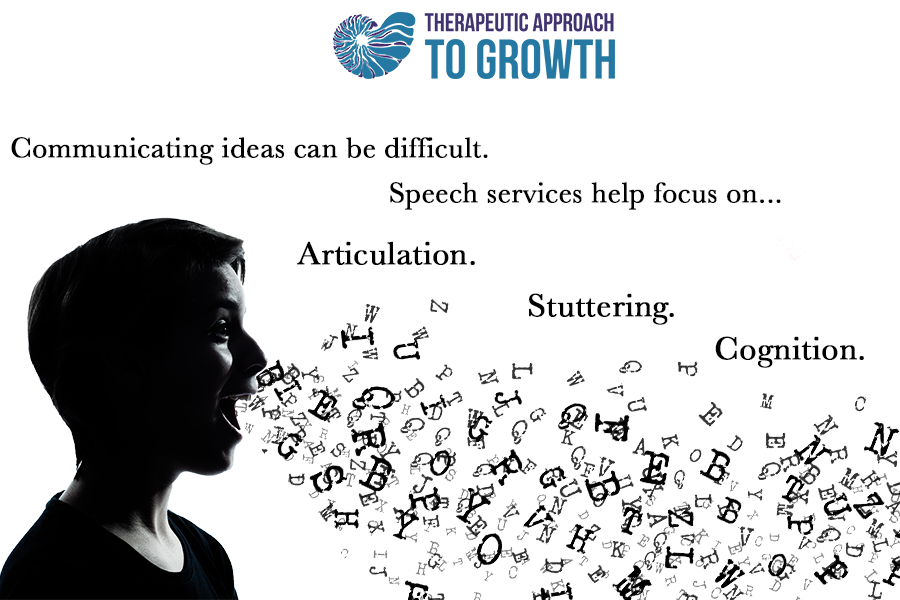Speech therapy is the assessment and treatment of communication problems and speech disorders. It is performed by speech-language pathologists (SLPs), which are often referred to as speech therapists.
Speech therapy techniques are used to improve communication. These include articulation therapy, language intervention activities, and others depending on the type of speech or language disorder.
Speech therapy may be needed for speech disorders that develop in childhood or speech impairments in adults caused by an injury or illness, such as stroke or brain injury.
Why do you need speech therapy?
There are several speech and language disorders that can be treated with speech therapy.
Articulation disorders. An articulation disorder is the inability to properly form certain word sounds. A child with this speech disorder may drop, swap, distort, or add word sounds. An example of distorting a word would be saying “thith” instead of “this”.
Fluency disorders. A fluency disorder affects the flow, speed, and rhythm of speech. Stuttering and cluttering are fluency disorders. A person with stuttering has trouble getting out a sound and may have speech that is blocked or interrupted, or may repeat part of all of a word. A person with cluttering often speaks very fast and merges words together.
Resonance disorders . A resonance disorder occurs when a blockage or obstruction of regular airflow in the nasal or oral cavities alters the vibrations responsible for voice quality. It can also happen if the velopharyngeal valve doesn’t close properly. Resonance disorders are often associated with cleft palate, neurological disorders, and swollen tonsils.
Receptive disorders . A person with receptive language disorder has trouble understanding and processing what others say. This can cause you to seem uninterested when someone is speaking, have trouble following directions, or have a limited vocabulary. Other language disorders, autism, hearing loss, and a head injury can lead to a receptive language disorder.
Expressive disorders. Expressive language disorder is difficulty conveying or expressing information. If you have an expressive disorder, you may have trouble forming accurate sentences, such as using incorrect verb tense. It’s associated with developmental impairments, such as Down syndrome and hearing loss. It can also result from head trauma or a medical condition.
Cognitive-communication disorders. Difficulty communicating because of an injury to the part of the brain that controls your ability to think is referred to as cognitive-communication disorder. It can result in memory issues, problem solving, and difficulty speaking, or listening. It can be caused by biological problems, such abnormal brain development, certain neurological conditions, a brain injury, or stroke.
Aphasia. This is an acquired communication disorder that affects a person’s ability to speak and understand others. It also often affects a person’s ability to read and write. Stroke is the most common cause of aphasia, though other brain disorders can also cause it.
Dysarthria. This condition is characterized by slow or slurred speech due to a weakness or inability to control the muscles used for speech. It’s most commonly caused by nervous system disorders and conditions that cause facial paralysis or throat and tongue weakness, such as multiple sclerosis (MS), amyotrophic lateral sclerosis (ALS), and stroke.
What happens during speech therapy?
Speech therapy usually begins with an assessment by an SLP who will identify the type of communication disorder and the best way to treat it.
If You are you speech Therapist, audiologist
join our ClubSpeech therapy for children
For your child, speech therapy may take place in a classroom or small group, or one-on-one, depending on the speech disorder. Speech therapy exercises and activities vary depending on your child’s disorder, age, and needs. During speech therapy for children, the SLP may:
- Interact through talking and playing, and using books, pictures other objects as part of language intervention to help stimulate language development.
- Model correct sounds and syllables for a child during age-appropriate play to teach the child how to make certain sounds.
- Provide strategies and homework for the child and parent or caregiver on how to do speech therapy at home.
- Speech therapy for adults.
- Speech therapy for adults also begins with assessment to determine your needs and the best treatment. Speech therapy exercises for adults can help you with speech, language, and cognitive communication.
Therapy may also include retraining of swallowing function if an injury or medical condition, such as Parkinson’s disease or oral cancer has caused swallowing difficulties.


Exercises may involve:
- Problem solving, memory, and organization, and other activities geared at improving cognitive communication
- Conversational tactics to improve social communication.
- Breathing exercises for resonance.
- Exercises to strengthen oral muscles.
There are many resources available if you’re looking to try speech therapy exercises at home, including:
Speech therapy apps
language development games and toys, such as flip cards and flash cards workbooks
How long do you need speech therapy?
The amount of time a person needs speech therapy depends on a few factors, including:
- Their age.
- Type and severity of the speech disorder.
- Frequency of therapy.
- Underlying medical condition.
- Treatment of an underlying medical condition.
- Some speech disorders begin in childhood and improve with age, while others continue into adulthood and require long-term therapy and maintenance.
A communication disorder caused by a stroke or other medical condition may improve as with treatment and as the condition improves.
How successful is speech therapy?
The success rate of speech therapy varies between the disorder being treated and age groups. When you start speech therapy can also have an impact on the outcome.
Speech therapy for young children has been shownTrusted Source to be most successful when started early and practiced at home with the involvement of a parent or caregiver.
The bottom line
Speech therapy can treat a broad range of speech and language delays and disorders in children and adults. With early intervention, speech therapy can improve communication and boost self-confidence.